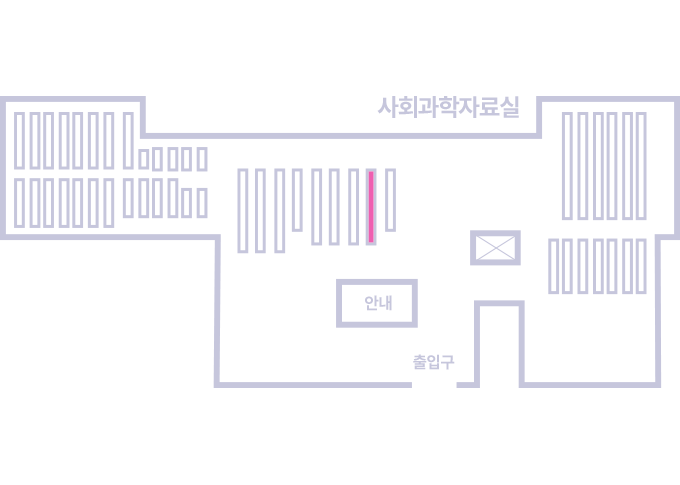권호기사보기
| 기사명 | 저자명 | 페이지 | 원문 | 기사목차 |
|---|
| 대표형(전거형, Authority) | 생물정보 | 이형(異形, Variant) | 소속 | 직위 | 직업 | 활동분야 | 주기 | 서지 | |
|---|---|---|---|---|---|---|---|---|---|
| 연구/단체명을 입력해주세요. | |||||||||
|
|
|
|
|
|
* 주제를 선택하시면 검색 상세로 이동합니다.
본 논문은 1514년과 1515년에 포르투갈 국왕 마누엘 1세가 교황 레오 10세에게 선물한 코뿔소와 코끼리를 주제로 다루고 있다. 지상에 서 가장 두꺼운 피부와 육중한 몸을 가진 이들 이국적인 동물은 국왕과 교황 사이의 정치적인 목적을 위해 선물한 것이었지만 16세기 초반의 유럽 미술사에도 뚜렷한 족적을 남겼다는 점에서 흥미롭다. 당시 유럽에서 매우 진기했던 동물에 대해 라파엘로는 소화불량으로 죽은 코끼리 를 애도하는 초상을 남겼고, 뒤러는 로마로 이송도중 익사한 코뿔소를 판화로 새겼다. 라파엘로가 현실에서 경험한 코끼리를 사실적으로 묘사 한 것과 달리 뒤러의 코뿔소는 부자연스럽다. 그럼에도 불구하고 뒤러의 작품은 유명세를 얻게 되고, 이후 몇 세기 동안 끊임없이 복제된다. 뒤러는 코뿔소를 실제로 본 적은 없지만, 상상에 의존해 그렸다. 라파엘로가 코끼리의 해부학적 정확성과 엄격한 비례에 초점을 맞추고 있다 면, 뒤러는 코뿔소의 강인한 동물적 속성을 초상하려고 시도하고 있어 예술가간 묘사의 관점이 다름을 알 수 있다. 코뿔소의 몸이 마치 여러 장의 갑옷으로 덮인 듯 묘사된 이유다. 뒤러의 코뿔소가 유명해지는 데에는 매체의 선택도 중요한 역할을 했다. 뒤러는 당시 새로운 매체인 판화를 이용했다. 제작이 손쉽고 대량생산이 가능했기 때문이다. 반면에 라파엘로는 전통적 방식인 벽화 제작을 위해 코끼리를 스케치했다. 두 화가 간 매체 선택의 차이 외에도 뒤러는 주문이 아닌 개인적인 관심에 따라 작품을 제작했다. 이로 인해 뒤러는 주제의 선정에서 제작 방식, 운영에 이르기까지의 모든 과정을 자유롭게 진행할 수 있었다.
This paper deals with the pachyderms, which were presented in the eraly 16th century to Pope by King of Portugal. Gifts of exotic animals were associated with the political intentions, but they left a remarkable footprint on European art history. Raphael left a drawing of an elephant’s portrait, while Dürer created the woodcut rhinoceros. In contrast to Raphael’s realistic image of elephant, Dürer's rhinoceros is zoologically inaccurate. Although Dürer had never seen an actual Rhinoceros, he was able to use his imagination. Whereas Raphael focused on anatomical accuracy and strict proportion of elephant in nature, Dürer tried to portray the animal’s super strength. So it seems that its body is covered with hard plates like sheets of armour. The type of media played an important role in gaining popularity. Dürer used the woodcut printing, which was a new medium at that time and was easy to manufacture as well as to mass-produce. But Raphael chose the traditional mural painting. Futhermore, Dürer produced the print in accordance with personal interests rather than customer’s orders. So, he can freely proceed his works from the selection of the subject to the production method and distribution.| 번호 | 참고문헌 | 국회도서관 소장유무 |
|---|---|---|
| 1 | 전한호. 「뒤러의 말, 발둥의 말」. 『서양미술사학회논문집』 46 (2017): 75-97. | 미소장 |
| 2 | Bedini, Silvio A. Der Elefant des Papstes. Stuttgart: Klett-Cotta, 2006. | 미소장 |
| 3 | Bedini, Silvio A. “The papal pachyderms.” Proceedings of the American Philosophical Society 125(1981): 75-90. | 미소장 |
| 4 | Herrbach, Brigitte and Erich Hubala. Kunst und Können. Drei graphische Techniken und ihre Meister. Schongauer-Kupferstiche. Dürer-Holzschnitte. Rembrandt-Radierungen aus der Sammlung Otto Schäfer. Schweinfurt: Selbstverlag, 1985. | 미소장 |
| 5 | Heydenreich, Ludwig H. Leonardo da Vinci. Basel: Holbein Verlag, 1944. | 미소장 |
| 6 | Kistler, John M. Animals in the Military: From Hannibal's Elephants to the Dolphins of the U.S. Navy. Santa Barbara, Calif.: ABC-CLIO, 2011. | 미소장 |
| 7 | Kutschbach, Doris. Albrecht Dürer: Die Altäre. Stuttgart: Belser, 1995. | 미소장 |
| 8 | Monson, Jim. “The Source for the Rhinoceros.” Print Quarterly 21 (2004): 50-53. | 미소장 |
| 9 | Panofsky, Erwin. The Life and Art of Albrecht Dürer. Princeton. New Jersey: Princeton University, 1955. | 미소장 |
| 10 | Pass, Günther. “Dürer und die wissenschaftliche Tierdarstellung der Renaissance.” Jahrbuch der Kunsthistorischen Sammlungen in Wien 82/83 (1986-1987): 57-67. | 미소장 |
| 11 | Pollmer-Schmidt, Almut. “Zwilling, Sau, Rhinozeros: Dürers Flugblätter.” In Dürer. Kunst-Künstler-Kontext (Frankfurt am Main, Städel Museum, 23 October 2013–2February 2014), ed. Jochen Sander, 294-297. München: Prestel, 2013. | 미소장 |
| 12 | Rupprich, Hans, ed. Dürer. Schriftlicher Nachlass, Vol I-III. Berlin: Dt. Verein für Kunstwissenschaft, 1956-1969. | 미소장 |
| 13 | Sander, Jochen, ed. Dürer. Kunst-Künstler-Kontext (Frankfurt am Main, Städel Museum, 23October 2013–2 February 2014), ed. 294-297. München: Prestel, 2013. | 미소장 |
| 14 | Sato, Naoki. “Die Verwandlung von Dürers Rhinozeros und sein emblematischer Charakter.”In Aus Albrecht Dürers Welt. Festschrift für Fedja Anzelewsky für 80. Geburtstag. eds. Bodo Brinkmann, Hartmut Krohm, Michael Roth, 91-98. Turnhout: Brepols Publishers n.v., 2001. | 미소장 |
| 15 | Schröder, Klaus-Albrecht and Maria-Luise Sternath, eds. Albrecht Dürer (Albertina Wien, 5September-30 November 2003). Ostfildern-Ruit: Hatje Cantz Verlag, 2003. | 미소장 |
| 16 | Trux, Elisabeth M. “Überlegungen zum Feldhasen und anderen Tierstudien Dürers mit einer Datierungsdiskussion.” In Albrecht Dürer (Albertina Wien, 5 September-30 November 2003). eds. Klaus-Albrecht Schröder and Maria-Luise Sternath, 45-55. Ostfildern-Ruit:Hatje Cantz Verlag, 2003. | 미소장 |
| 17 | Winkler, Friedrich. Die Zeichnungen Albrecht Dürers, Vol III. Berlin: Dt. Verein für Kunstwissenschaft, 1938. | 미소장 |
| 18 | Winner, Matthias. “Raffael malt einen Elefanten.” In Mitteilungen des Kunsthistorischen Institutes in Florenz 9 (1964): 71–109. | 미소장 |
*표시는 필수 입력사항입니다.
| 전화번호 |
|---|
| 기사명 | 저자명 | 페이지 | 원문 | 기사목차 |
|---|
| 번호 | 발행일자 | 권호명 | 제본정보 | 자료실 | 원문 | 신청 페이지 |
|---|
도서위치안내: 정기간행물실(524호) / 서가번호: 국내06
2021년 이전 정기간행물은 온라인 신청(원문 구축 자료는 원문 이용)

우편복사 목록담기를 완료하였습니다.
*표시는 필수 입력사항입니다.
저장 되었습니다.